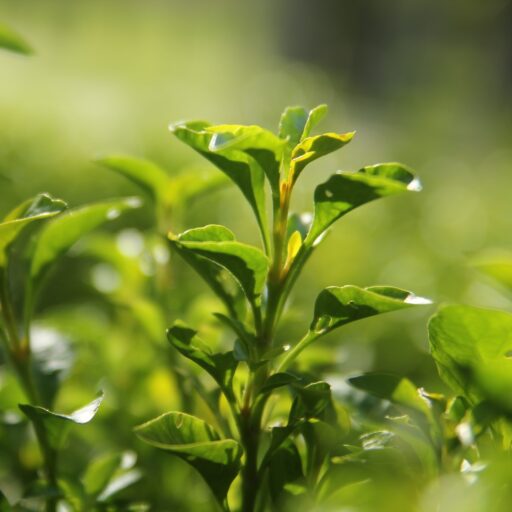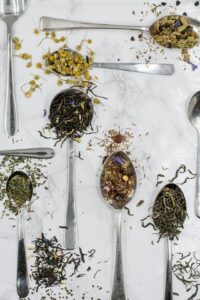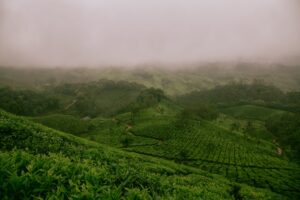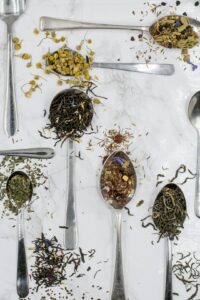Support our educational content for free when you purchase through links on our site. Learn more
[2023] Camellia Sinensis Plant: The Ultimate Guide to Growing Teas
Table of Contents
- Quick Answer
- Quick Tips and Facts
- Plant Detail
- Common Names
- Where to Grow
- How to Grow
- Harvesting and Processing
- Health Benefits
- FAQ
- Conclusion
- Recommended Links
- Reference Links
Quick Answer
The Camellia sinensis plant is the source of all true teas, including black, green, white, and oolong tea. It is a versatile plant that can be grown in various climates and produces leaves that are rich in antioxidants and other beneficial compounds. Growing Camellia sinensis plants at home allows you to have a constant supply of fresh tea leaves and experiment with different flavors.
Quick Tips and Facts
- The Camellia sinensis plant is an evergreen shrub native to East Asia.
- It is the only plant that can produce true teas.
- There are several varieties of Camellia sinensis, each with its own unique flavor profile.
- The plant prefers well-draining soil and partial shade.
- It can be grown in containers or directly in the ground.
- Pruning helps maintain the plant's shape and promotes new growth.
- The leaves are harvested and processed to produce different types of tea.
- Camellia sinensis plants can be grown indoors with proper care and lighting.
- The plant is resistant to most pests and diseases.
- It takes several years for a Camellia sinensis plant to reach maturity and produce a significant yield.
Plant Detail
The Camellia sinensis plant is a member of the Theaceae family and is known for its glossy, dark green leaves and delicate white flowers. It can grow up to 6 feet tall and has a dense, bushy growth habit. The plant's leaves are elliptical in shape and have serrated edges.
Common Names
The Camellia sinensis plant is commonly known as:
- Tea plant
- Tea shrub
- Tea tree
Where to Grow
Camellia sinensis plants can be grown in a variety of climates, ranging from tropical to temperate. The plant prefers regions with mild winters and moderate rainfall. It can tolerate temperatures as low as 10°F (-12°C) but may require protection in colder climates.
Hardiness Zones
The Camellia sinensis plant is hardy in USDA zones 7-9. In colder zones, it can be grown in containers and brought indoors during the winter months.
Soil Requirements
The plant thrives in well-draining, acidic soil with a pH between 5.0 and 6.5. If your soil is alkaline, you can amend it with organic matter such as peat moss or compost to lower the pH.
Light Requirements
Camellia sinensis plants prefer partial shade, especially during the hottest part of the day. They can tolerate full sun, but excessive heat can stress the plant and affect tea quality.
Container Growing
Growing Camellia sinensis plants in containers is a popular option for gardeners with limited space or colder climates. Choose a container that is at least 12 inches in diameter and has drainage holes. Use a well-draining potting mix and place the container in a location that receives partial sun.
How to Grow
Growing Camellia sinensis plants requires attention to detail and proper care. Here are the steps to successfully cultivate your own tea plants:
Propagation
Camellia sinensis plants can be propagated from seeds or cuttings. While seeds are readily available, they can take longer to germinate and may not produce plants with the desired characteristics. Taking cuttings from an existing plant is a more reliable method.
- Select a healthy, mature branch from the parent plant.
- Cut a 4-6 inch section below a leaf node.
- Remove the lower leaves, leaving only a few at the top.
- Dip the cut end in rooting hormone to promote root growth.
- Plant the cutting in a pot filled with a well-draining potting mix.
- Keep the soil moist and provide indirect light.
- After a few weeks, the cutting should develop roots.
Planting
Once your Camellia sinensis plants have established roots, it's time to transplant them into their permanent location. Follow these steps:
- Choose a site with partial shade and well-draining soil.
- Dig a hole slightly larger than the root ball of the plant.
- Place the plant in the hole, making sure it is level with the surrounding soil.
- Backfill the hole with soil, gently firming it around the roots.
- Water the plant thoroughly to settle the soil.
Watering
Camellia sinensis plants require regular watering, especially during dry spells. Keep the soil evenly moist but not waterlogged. Mulching around the base of the plant can help retain moisture and regulate soil temperature.
Pruning
Pruning is essential for maintaining the shape and health of your Camellia sinensis plants. Here are some tips:
- Prune in late winter or early spring before new growth begins.
- Remove any dead, damaged, or diseased branches.
- Thin out crowded areas to improve air circulation.
- Pinch back the tips of the branches to encourage bushier growth.
- Regular pruning helps rejuvenate the plant and promote new leaf production.
Fertilizing
Camellia sinensis plants benefit from regular fertilization to ensure healthy growth and tea production. Use a balanced fertilizer formulated for acid-loving plants, following the manufacturer's instructions. Apply the fertilizer in early spring and again in late summer.
Pests and Diseases
Camellia sinensis plants are relatively resistant to pests and diseases. However, they can occasionally be affected by:
- Aphids: These small insects feed on the plant sap and can be controlled with insecticidal soap or neem oil.
- Tea scale: Scale insects can infest the leaves and stems of the plant. Use horticultural oil or insecticidal soap to control them.
- Root rot: Overwatering or poorly draining soil can lead to root rot. Ensure proper drainage and avoid overwatering.
Harvesting and Processing
The leaves of the Camellia sinensis plant are harvested and processed to produce different types of tea. Here's an overview of the process:
- Harvesting: Pluck the young, tender leaves and buds from the plant. The top two leaves and the bud are the most desirable for tea production.
- Withering: Allow the leaves to wither for several hours to reduce moisture content and make them more pliable.
- Rolling: Roll the withered leaves to break down the cell walls and release the enzymes responsible for oxidation.
- Oxidation: Depending on the desired type of tea, the leaves are either allowed to oxidize or are immediately heated to halt the oxidation process.
- Drying: The leaves are dried to remove any remaining moisture and preserve their flavor and aroma.
- Sorting and Packaging: The processed tea leaves are sorted by size and quality before being packaged for sale.
The exact processing methods vary for each type of tea, resulting in the distinct flavors and characteristics of black, green, white, and oolong teas.
Health Benefits
Drinking tea made from the Camellia sinensis plant offers a range of health benefits. Here are some of the potential advantages:
- Antioxidants: Tea leaves are rich in antioxidants, which help protect the body against free radicals and oxidative stress.
- Heart Health: Regular tea consumption has been linked to a reduced risk of heart disease and stroke.
- Weight Management: Some studies suggest that the compounds in tea can aid in weight loss and weight management.
- Mental Alertness: The caffeine and L-theanine content in tea can improve focus, alertness, and cognitive function.
- Digestive Health: Certain types of tea, such as green tea, may help improve digestion and promote a healthy gut.
While tea can be a part of a healthy lifestyle, it's essential to consume it in moderation and as part of a balanced diet.
FAQ
Can you grow Camellia sinensis in the USA?
✅ Yes, Camellia sinensis can be grown in the USA. It is hardy in USDA zones 7-9 and can be grown in containers in colder climates.
Is Camellia sinensis the same as green tea?
❌ No, Camellia sinensis is the plant from which all true teas, including green tea, are derived. Green tea is made from unoxidized tea leaves.
What is Camellia sinensis used for?
Camellia sinensis is primarily used for tea production. The leaves are harvested and processed to create different types of tea, including black, green, white, and oolong tea.
What are the benefits of Camellia tea plant?
The Camellia sinensis plant offers numerous benefits, including antioxidant properties, potential heart health benefits, weight management support, improved mental alertness, and digestive health support.
Can you grow Camellia sinensis indoors?
✅ Yes, Camellia sinensis can be grown indoors with proper care and lighting. Providing sufficient sunlight or using grow lights is essential for indoor cultivation.
Conclusion
Growing your own Camellia sinensis plants is a rewarding experience that allows you to enjoy the freshest tea possible. With the right conditions and care, you can cultivate these versatile plants and experiment with different flavors and tea varieties. Whether you choose to grow them in your garden or in containers indoors, the Camellia sinensis plant will provide you with an abundant supply of leaves to create your own unique teas.
Recommended Links
- Shop Camellia sinensis plants on Amazon
- Shop tea growing supplies on Amazon
- Shop tea processing equipment on Amazon
- Learn more about black tea growing
- Explore green tea cultivation
- Discover herbal tea planting
- Find out about how to grow teas
- Learn organic farming techniques
- Understand the importance of soil and climate for tea
- Stay updated on tea market trends
- Explore different tea plant varieties
- Learn about tea regions and cultures at Growing Teas™







